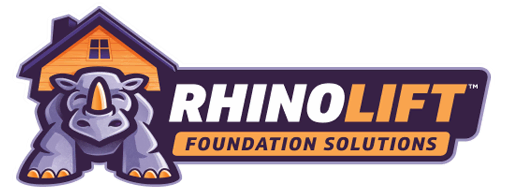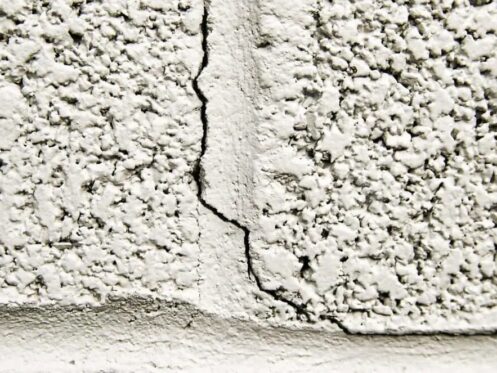Concrete settlement is a common problem for property managers and homeowners, often resulting from improper compaction, changes in moisture, and unstable soil. When foundations or slabs crack or sink, it’s not just a cosmetic issue; it can present real safety hazards. When left unchecked, the structural damage can be costly. Polyurethane foam foundation repair is a solution that is growing in popularity because it is durable, affordable, and fast. Also called poly leveling or polyjacking, this method is changing many conversations about sunken concrete slabs and how to handle them.
An Overview
Polyurethane foam foundation repair is a process that injects high-density foam underneath concrete slabs, lifting and leveling them for improved stability. The foam expands immediately to fill voids and restore support for structures impacted by erosion or soil movement. This technique is more cost-effective and less invasive than conventional methods, including mudjacking and total concrete replacement. It works well for commercial, residential, and municipal applications. The fast cure time is appealing to homeowners and property managers who want to minimize potential disruptions to their spaces.
How It Works
The polyjacking process is practical and straightforward. Technicians precisely drill small holes into an affected concrete slab for targeted foam injection. Two-part, specially engineered foam flows freely through voids before expanding on contact where desired. The expansion can be as much as 20 times the original volume; this fills voids and stabilizes the base underneath the concrete.
Bonding with surrounding materials is effective, and curing is fast, commonly happening within minutes. When the foam expands, the slab is gently lifted back into place, restoring its alignment without causing structural stress. After a slab is leveled correctly and supported, technicians patch the injection holes using durable materials for a clean and nearly invisible finish.
Benefits of Polyurethane Foam Foundation Repair
Polyurethane foam foundation repair is lightweight, strong, long-lasting, and adaptable without costing a lot or disrupting a home or property. Compared to deeper foundation repairs or whole slab movement, polyjacking is substantially less expensive in most cases. You can avoid demolition, the long curing times involved with poured concrete, and debris removal. Budget-conscious homeowners find this a practical choice.
It’s also great if you value time. The quick process can frequently be finished in a single day. Any drilled holes are minimal, the equipment is compact, and the foam cures fast. You won’t need to shut down operations or leave your property for an extended period. It’s also a wise long-term investment. Once cured, polyurethane foam is very stable, non-eroding, and water-resistant. Once in place, it might last 25 to 100 years.
Polyurethane foam is both strong and lightweight. That reduces the chances of more soil compression and the risks of resettlement in the future. It also has some flexibility, meaning it can accommodate the minor ground movements that happen on a seasonal basis. By not losing integrity or cracking, it’s an ideal solution for regions with variable soil and weather conditions.
Common Uses
Polyjacking is used in many large-scale commercial jobs, but its effectiveness and versatility make it suitable for a wide range of applications, including foundation repair, sidewalks, driveways, patios, pool decks, garage floors, and void filling. Residential homes with uneven or sinking foundations can be stabilized or lifted in entire sections without the need for excavation.
Polyjacking can also restore uneven walkways quickly, helping to improve curb appeal and minimize tripping hazards. Pool decks and patios are high-traffic areas prone to settling over time, but foam injection smooths things out by leveling them, restoring aesthetics, and ensuring safety. This process can also lift sagging garage slabs and fill invisible but dangerous voids underneath concrete, restoring structural support without any digging.
Comparisons With Other Repair Options
Polyurethane foam isn’t the only repair option for foundation issues. Traditional mudjacking is a common alternative using a slurry of soil and cement to lift concrete. It’s effective, but it requires larger holes, takes longer to cure, and adds significant weight. Heavier materials can compress the soil even more, resulting in future settlement.
Concrete replacement is expensive, time-consuming, and labor-intensive. There is also a risk of future slab settlement because this process does not directly address the underlying soil issues.
Foundation piers can be necessary for major structural shifts. This involves driving steel piers down into the stable soil layers before lifting the foundation from underneath. It’s effective, but it’s also invasive and costly.
The bottom line is that in non-structural cases, polyurethane foam foundation repair is usually more cost-effective, less disruptive, and more durable than these three traditional solutions.
Not a Structural Repair
You need to know that polyurethane foam foundation repair can be a powerful answer to many problems, but it’s a non-structural solution. It works best for stabilizing or lifting slabs that have settled because of soil movement. However, it’s intended to repair foundational damage due to structural issues, such as deep subsidence or wall bowing. Seasonal changes can still result in minor movements. While this foam will support a slab, it doesn’t eliminate all of the possible natural shifting. Having said that, it can reduce foundational stress and prevent further damage.
Environmental Durability
Polyurethane foam is resistant to moisture, chemically stable, and inert once cured. You can trust it not to leach into your property’s soil or break down over time. Compared to cementitious products, it’s an eco-friendly alternative. Local conditions influence the longevity of foam foundation repairs. Soil composition, moisture levels, and freeze/thaw cycles all play their part, but this kind of repair can last anywhere from 25 years to a full century. Arid climates with minimal soil movement are places where foam can remain intact indefinitely.
When Should You Consider Polyjacking?
You may want to consider polyurethane foam foundation repair under certain circumstances, such as gaps under slabs or steps, and cracks in concrete walls or floors. Shifting can cause windows and doors to stick, or you may notice pooling water around the edges of your property’s foundation. Uneven or sloping surfaces can happen indoors or outdoors. In any of these cases, a foundation specialist can evaluate your property to identify specific issues and determine if polyjacking might be the solution.
A Forward-Thinking Alternative
Polyurethane foam foundation repair is a smart alternative to conventional methods because it’s clean, cost-effective, fast, and long-lasting. It has everything today’s property managers and homeowners need to maintain structural safety and functionality, without requiring total replacement or incurring significant costs and downtime. While not an ideal solution for all kinds of foundation issues, it excels in circumstances involving moderate settlement, voids, and sunken concrete slabs. Properly used, it provides high-caliber long-term performance that may outlast the materials it supports.
RhinoLift Foundation Solutions offers foundation repair services to residents of Charlotte and the surrounding areas in North and South Carolina. Our services include repairs to retaining walls, foundation walls, leaning chimneys, and crawl space foundations. We also handle push and helical piers and deep soil foam injection. Looking for signs you need foundation repair? We can help. Contact RhinoLift Foundation Solutions when you need foundation solutions for your home.

